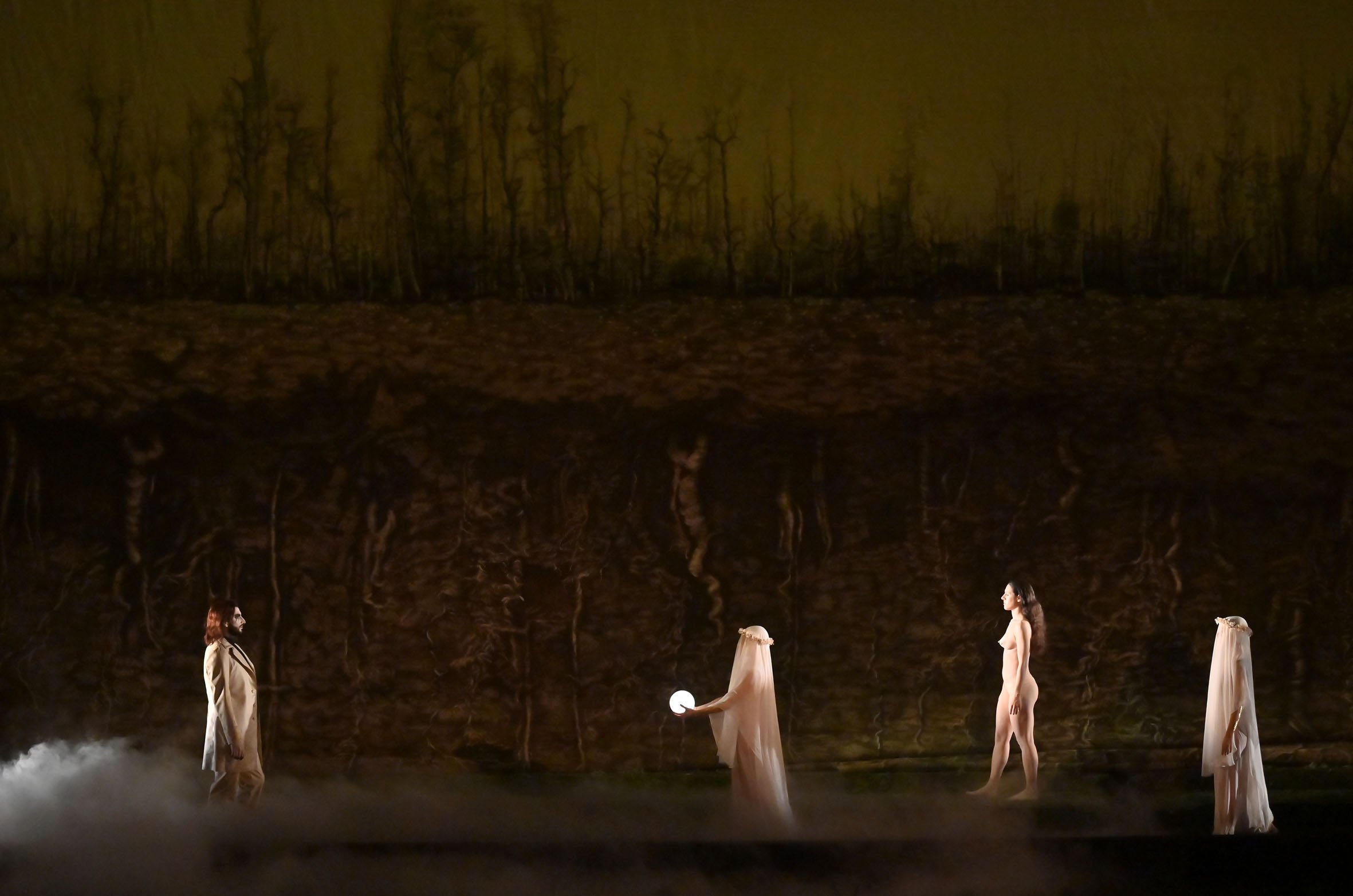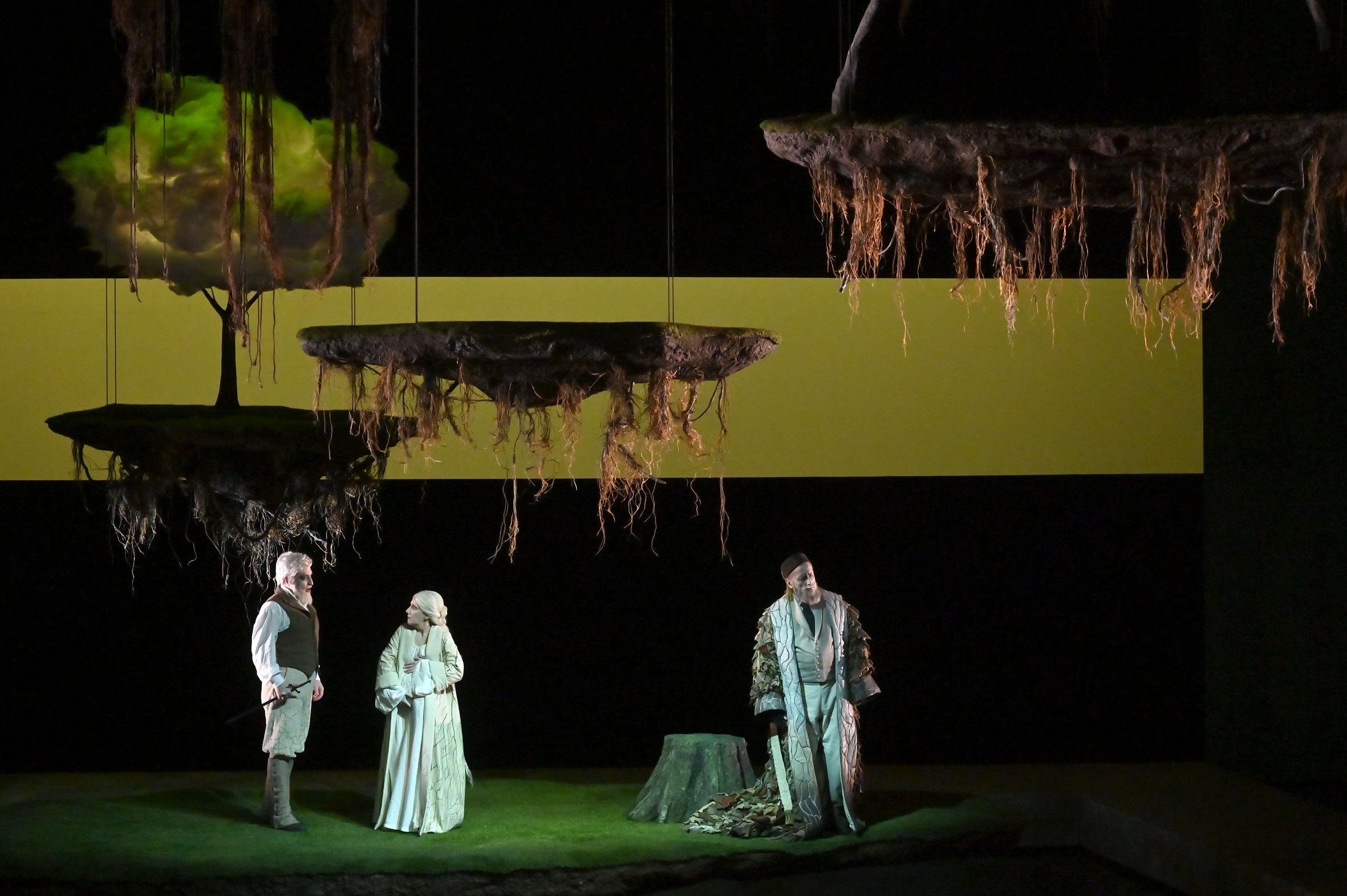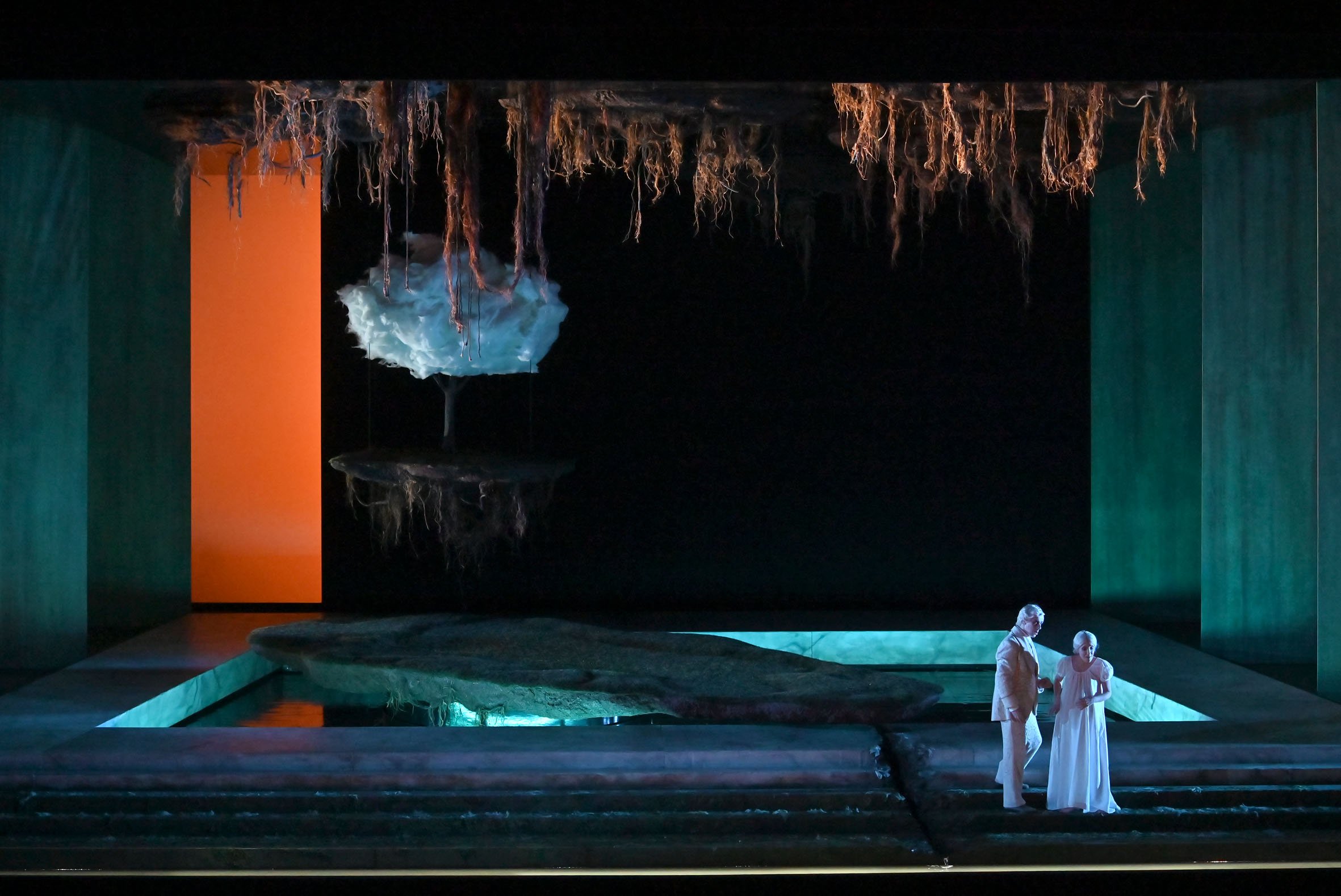PELLEAS ET MELISANDE
by Claude Debussy at Teatro Regio di Parma
"Per questo Pelléas et Mélisande il tandem canadese Barbe & Doucet – artefice di regia, scene e costumi, affidando le luci a Guy Simard - ha immerso l'illusorio regno d'Allemonde in atmosfere fortemente oniriche e surreali, più che soltanto fiabesche. Un mondo sospeso tra cielo e terra, in cui anche il castello di re Arkël e gli alberi galleggiano in aria, come in certe immagini di Magritte o di floating islands, mostrando lunghe radici che anelano la terra e l'acqua. Ed è acqua vera quella che vediamo scorrere in primo piano, a lambire i personaggi vestiti di tessuti grezzi ancorché tagliati con eleganza. Poderosa poi la carica drammaturgica, dagli sviluppi sintetici e rarefatti, con gesti appena accennati o trattenuti, ma comunque pregni di significato. Movenze e sguardi che ben rendono l'aleggiare di quella difficoltà di comunicazione, di quella incapacità di esprimere a fondo i propri sentimenti, di quel sognare vie di fuga impossibili che sovrastano e imprigionano tutti i personaggi."
G. Mion - Teatro
DEBUSSY & SPIRITISM
In 1889, Debussy envisioned his ideal librettist : « One, who, by saying things by halves, would allow me to graft my drama onto his characters. Characters who submit to fate and do not argue and whose story belonged to no time or place. » Maeterlinck proved to meet those requirements.
As witnessed in his last uncompleted opera The Fall of the house of Usher, to which he composed the music & wrote the libretto based on the Edgar Allan Poe Novel, Debussy had a particular attraction to Spiritism. In her writtings his daughter Emma mentioned the attraction of the composer to the Spirit world. After his death she was trying to get in contact with him.
According to Allan Kardec Spiritism is a science which deals with the nature, origine and destiny of spirits, as well as their relationship with the corporeal world. The movement started in Paris at the end of the 19 century and spreaded all over Europe.
We took this avenue as a base of inspiration for the creation of this new production of Pelléas et Mélisande. In this opera the conflicts in between the characters are expressed but never resolved.
Found on the side of a river (is it the Styx ?) Melisande reveals to be a lost soul isolated in her melancholy. Even though the eyes are the window of the soul, a lost soul is not always easy to see. Like Mélisande a lost soul has had a tragedy, so devastating, they find it impossible to give their heart to anyone. They are spiritualy adrift.
With the brutal death of Pelléas, Golaud joined this familly of isolated spirits who will have to find peace before they could all complete their journey.
Die Toteninsel (The isle of the dead) by symbolist artist Arnold Böcklin is a serie of 5 paintings created in between 1880 & 1886. The set is an interpretation of those paintings. The Royaume d’Allemonde, surounded by water, is very much like the isle of the dead where all those entities are trapped.
Pelléas et Mélisande is an opera about the drowning of the souls. Where the forces of nature drag the characters to the bottom of a forbiden Love.
Nothing is accomplished even through death.
A. Barbe & R. Doucet (View Full Text)
Pelléas et Mélisande has been produce despite Covid thanks to all the teams enormous efforts. Theproduction was successfully filmed and presented on RAI5 and will go back to the stage in 2023 and 2024.
CREDITS
Lighting Designer : Guy Simard
Photos : Teatro Regio di Parma
Video : Teatro Regio di Parma
















